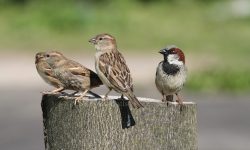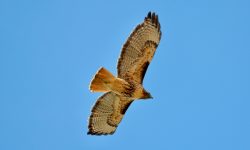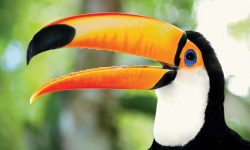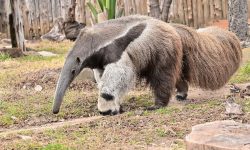Phyllopezus pollicaris may not be the most famous gecko, but this resilient species has carved a unique niche in South American ecosystems. Found primarily in Brazil and surrounding regions, this gecko has adapted in ways that make it a fascinating subject of study and a standout among reptiles. From its anatomy and behavior to its ecological role and survival skills, Phyllopezus pollicaris is full of surprises.
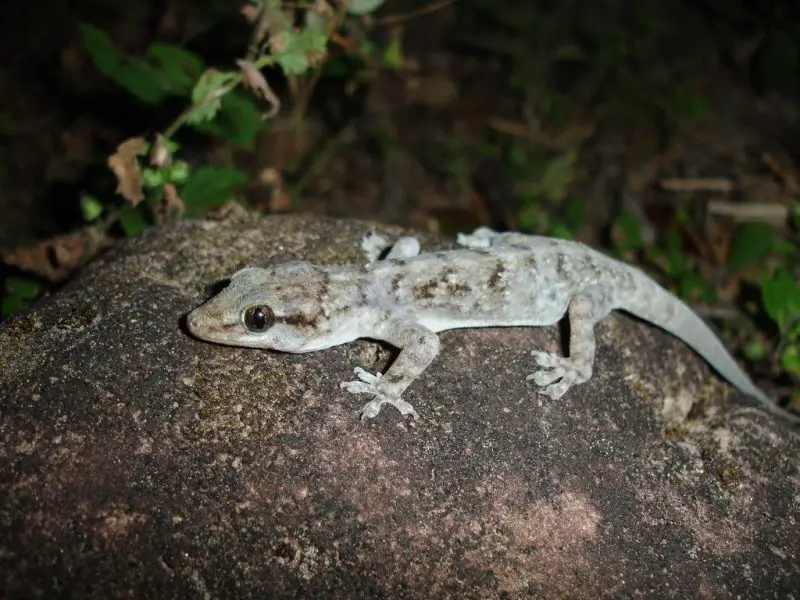
Where Is Phyllopezus pollicaris Found?
Native Range Across South America’s Heartland
Phyllopezus pollicaris is endemic to South America and is most commonly found in Brazil, with confirmed populations extending into Paraguay, eastern Bolivia, and northern Argentina. Within this broad distribution, the species inhabits a wide range of ecosystems, showcasing an exceptional level of ecological plasticity. It occurs in the Caatinga—a dry shrubland biome with stony outcrops—as well as in the Cerrado savannas, semi-deciduous Atlantic Forests, and transitional zones between forest and open habitat. This adaptability allows P. pollicaris to exploit ecological niches that many other gecko species cannot access.
Its distribution appears closely tied to vertical microhabitats such as rock faces, tree trunks, and artificial walls, suggesting a preference for surfaces that offer both camouflage and thermoregulatory potential. In natural settings, it is frequently seen on the bark of trees or nestled in rock crevices, where its mottled coloration blends seamlessly into the background.
A Gecko That Thrives in the Urban Jungle
What truly sets Phyllopezus pollicaris apart is its remarkable capacity to thrive in anthropogenic environments. Unlike many reptile species that are sensitive to habitat disturbance and fragmentation, this gecko has not only tolerated urbanization but often flourishes in it. It is commonly observed on exterior walls of houses, under roof tiles, or even clinging to concrete and brick surfaces under artificial lighting.
This urban tolerance is facilitated by its behavioral flexibility and generalist diet, allowing it to take advantage of the insect populations that gather around lights or within homes. Its toe pads, equipped with adhesive lamellae, provide it with an evolutionary advantage in navigating smooth vertical surfaces—whether bark or plaster.
The presence of P. pollicaris in densely populated areas across Brazil has even led to its informal nickname: “urban gecko.” Yet, its success in human-altered landscapes is not merely a story of survival—it reflects a deeper evolutionary resilience and a capacity for behavioral innovation that few lizards exhibit to such a degree.
Physical Traits That Make It Unique
A Broad, Flattened Head Built for Crevices
One of the most recognizable anatomical traits of Phyllopezus pollicaris is its disproportionately broad and dorsoventrally flattened head. This structural adaptation not only gives the species its common nickname—“fat-headed gecko”—but also serves an important ecological function. The head’s flattened profile allows the gecko to slip into narrow rock crevices, bark fissures, or gaps between man-made surfaces where it can shelter from predators, conserve moisture, and ambush unsuspecting prey. Additionally, this cranial shape may facilitate pressure distribution during climbing, giving the gecko better control on uneven surfaces.
Cryptic Coloration and Armor-Like Skin
The body of Phyllopezus pollicaris is typically covered in a mosaic of earthy hues—ranging from grayish beige to brown—interrupted by irregular dark blotches or banding. These colors mirror the textures and tones of its environment, especially tree bark, rocks, and concrete, making it a master of camouflage. This cryptic coloration not only reduces visibility to predators but also helps the gecko remain inconspicuous to insect prey during ambush hunting.
Covering this body is a dense layer of granular, keeled scales that lend the skin a coarse, rugged texture. These scales serve as physical protection against abrasion and desiccation, especially in the drier parts of its range such as the Caatinga biome. In combination with its compact body plan, this scaly armor enables the gecko to move confidently through rough terrain without injury.
Adhesive Toe Pads Engineered for Vertical Life
Perhaps the most remarkable adaptation in Phyllopezus pollicaris is its specialized toe morphology. Each digit ends in a broad pad equipped with lamellae—rows of microscopic setae (hair-like structures) that generate van der Waals forces, allowing the gecko to adhere to a variety of vertical and even inverted surfaces. This advanced adhesion system functions equally well on natural substrates like tree trunks and rocks, as well as on smooth human-made surfaces like glass, metal, or plaster.
These toe pads are not just tools for climbing—they are instruments of survival. They enable quick escapes, stealthy stalking, and stable resting positions in otherwise precarious spots. In the context of urban adaptation, these climbing abilities have proven especially advantageous, allowing P. pollicaris to explore vertical habitat spaces unavailable to most terrestrial reptiles.
Behavior and Daily Life
Primarily Nocturnal, Yet Behaviorally Flexible
Phyllopezus pollicaris is predominantly nocturnal, emerging after sunset to forage, explore, and interact with its environment under the cover of darkness. This nocturnality likely evolved as a response to predation pressure and thermal regulation, allowing the gecko to avoid the high daytime temperatures common in its native range. At night, it relies heavily on keen visual and chemosensory cues to locate prey and navigate complex surfaces.
Interestingly, unlike many strictly nocturnal geckos, P. pollicaris exhibits a degree of diurnal flexibility. In shaded microhabitats, during overcast days, or in areas with minimal human disturbance, individuals have been documented moving or basking during daylight hours. This behavioral plasticity may be particularly advantageous in urban settings, where artificial lighting and structural shade create new activity windows. Such temporal flexibility enhances the species’ survival potential across a wide range of environmental contexts.
Site Fidelity and Quiet Territoriality
Male Phyllopezus pollicaris individuals often exhibit site fidelity, occupying the same vertical surface—be it a tree trunk, stone wall, or building façade—for extended periods. These microterritories provide familiar hunting grounds, refuge sites, and stable thermal microclimates. While this suggests a territorial nature, overt aggression is rarely observed. Instead of active defense through combat or displays, P. pollicaris appears to rely on passive deterrence—repeated presence and chemical markings may be enough to discourage intruders.
This low-aggression strategy conserves energy and minimizes the risk of injury, allowing the gecko to focus on foraging and thermoregulation. Such behavioral economy is especially useful in environments where competition for space is high, such as urban walls with limited crevices.
Stealth Hunters with Patience
The daily rhythm of Phyllopezus pollicaris is marked by stealth and precision. It typically hunts by waiting motionless near light sources or insect-rich surfaces, launching short, sudden lunges at passing prey. Its movements are deliberate, conserving energy and maintaining the element of surprise. This sit-and-wait foraging strategy complements its camouflage and allows it to feed efficiently on a broad range of arthropods.
In sum, the behavior of Phyllopezus pollicaris reveals a reptile finely tuned to both natural and artificial landscapes—cautious but adaptable, solitary yet unobtrusive, and always equipped for survival in a changing world.
Diet and Hunting Style
Insectivorous and Opportunistic Predator
Phyllopezus pollicaris is a generalist insectivore, preying upon a wide array of arthropods that are abundant in both natural ecosystems and urban environments. Its diet includes beetles, moths, ants, termites, spiders, and occasionally small orthopterans. Rather than specializing in one prey group, this gecko employs an opportunistic foraging strategy—consuming whatever invertebrates are seasonally or locally available.
The species exhibits a foraging mode that blends ambush tactics with short, calculated pursuits. Using its excellent night vision, P. pollicaris can detect even subtle movements in dim light. Its eyes are adapted with vertical slit pupils and a high density of rod cells, enhancing sensitivity in low-light conditions typical of nocturnal environments. Once prey is detected, it either lunges with precision or slowly creeps within striking distance before delivering a swift bite.
This hunting approach is both energy-efficient and effective, especially in vertical or complex microhabitats such as bark, stone walls, and ceilings. The gecko’s cryptic coloration further aids in its stealth, allowing it to remain virtually invisible to prey until it strikes.
A Natural Ally in Urban Pest Control
In urban and suburban environments, Phyllopezus pollicaris frequently consumes insects that are considered pests by humans, such as cockroaches, ants, mosquitoes, and houseflies. Its affinity for illuminated areas—like walls near porch lights or interiors with open windows—puts it in direct contact with these nuisance species. By preying on insects that congregate around artificial light sources, P. pollicaris inadvertently becomes an effective agent of natural pest control.
Despite its low public profile, this gecko plays a subtle but meaningful ecological role in regulating urban insect populations. Its presence often goes unnoticed, as it remains quiet, motionless, and camouflaged during the day. However, its nightly activity has measurable ecological value, contributing to the balance between predator and prey in environments where chemical pest control is commonly used.
In this way, Phyllopezus pollicaris not only survives in the human-altered landscape—it enhances it, offering an underappreciated service that supports biodiversity and reduces the need for artificial pest management.
Reproduction and Life Cycle
Clutches of Two: A Reproductive Strategy Rooted in Efficiency
Phyllopezus pollicaris, like most members of the Gekkonidae family, follows a reproductive pattern characterized by small clutch size but high developmental investment. Females typically lay clutches of two calcified, hard-shelled eggs, which are oval and adhesive in texture. These eggs are not deposited at random; instead, females seek out sheltered microhabitats such as rock crevices, gaps behind bark, abandoned insect burrows, or spaces between man-made structures—locations that offer protection from predators, desiccation, and extreme temperatures.
Egg-laying may occur multiple times throughout the breeding season, depending on climate and food availability. In tropical and subtropical zones where P. pollicaris is most abundant, reproduction can occur year-round, though peaks may align with warmer, wetter months that ensure optimal conditions for egg incubation and juvenile survival.
Fast Hatchlings, Fully Equipped for Independence
Incubation time for Phyllopezus pollicaris eggs generally ranges from six to ten weeks, but this period can vary with ambient temperature and humidity. Warmer conditions tend to accelerate development, while cooler or drier environments slow embryogenesis. Interestingly, like many geckos, this species may exhibit temperature-dependent sex determination, though this remains poorly studied in P. pollicaris specifically.
Upon hatching, the juveniles emerge as fully developed miniature versions of the adults, measuring just a few centimeters in length but already equipped with functional toe pads, camouflage patterns, and predatory instincts. Unlike birds or mammals, these hatchlings receive no parental care. Within hours of emergence, they begin exploring their surroundings and hunting small invertebrates.
This early independence is a key survival strategy in environments that are often unpredictable or resource-scarce. By minimizing dependence on adult protection or provisioning, P. pollicaris maximizes its reproductive output and reduces vulnerability to environmental pressures.
A Life Strategy Built for Resilience
The reproductive success of Phyllopezus pollicaris lies not in producing large numbers of offspring but in ensuring that each hatchling is self-sufficient and well-adapted from the start. This strategy allows the species to colonize fragmented or unstable habitats, including cities, where consistent reproductive opportunities are balanced by high juvenile mortality. Even in such challenging environments, the gecko’s life cycle continues largely uninterrupted—an evolutionary testament to its ecological resilience.
Ecological Significance
A Model of Urban Resilience
In the often-hostile environments of cities—characterized by pollution, artificial surfaces, fragmented green spaces, and temperature extremes—most reptiles decline in abundance or vanish entirely. Phyllopezus pollicaris, however, is a notable exception. It stands out as one of the few native gecko species in South America that not only survives but flourishes in urban landscapes. This remarkable adaptability is a product of both morphological traits (such as adhesive toe pads and cryptic coloration) and behavioral plasticity (including flexible activity patterns and opportunistic foraging).
By establishing stable populations on man-made surfaces such as concrete walls, rooftops, and building façades, P. pollicaris continues to perform critical ecological functions, even within heavily modified environments. Chief among these is insect population control. By preying on insects attracted to artificial lights or human dwellings, this gecko indirectly benefits human health and comfort, reducing the need for chemical pest control measures.
Its persistence in cities also helps maintain trophic linkages, as it may serve as prey for birds, snakes, or larger mammals even in urban settings—contributing to a functioning food web amid concrete and steel.
An Indicator of Habitat Flexibility and Environmental Change
Beyond its practical role in pest regulation, Phyllopezus pollicaris also holds scientific value as a bioindicator species. Because it is capable of occupying a broad spectrum of habitats—from undisturbed dry forests and savannas to high-density urban zones—its presence and abundance can be used to assess patterns of habitat fragmentation, urban expansion, and ecological resilience in the face of anthropogenic pressures.
Its ability to exploit both natural and artificial substrates makes it a useful model organism for studying adaptive evolution, behavioral ecology, and climate-driven range shifts. Monitoring changes in its distribution, reproduction, and behavior over time could yield valuable insights into how native species respond to accelerating urbanization and global warming.
In essence, Phyllopezus pollicaris is more than just a gecko clinging to a city wall—it is a quiet witness to ecological change and a biological testament to nature’s ability to persist in the most unexpected places.
Conservation Status
A Species of Least Concern, for Now
According to the International Union for Conservation of Nature (IUCN), Phyllopezus pollicaris is currently classified as a species of Least Concern. This designation reflects its broad geographic range, ecological flexibility, and robust population numbers across much of South America. Unlike many reptiles that are highly specialized and thus vulnerable to environmental changes, P. pollicaris exhibits a generalist approach to habitat use and foraging—traits that likely buffer it against extinction risks.
Its ability to occupy both natural landscapes (like dry forests and savannas) and anthropogenic environments (such as urban walls and rooftops) gives it a survival advantage in an era marked by accelerating habitat transformation. In many regions of Brazil, it remains one of the most frequently encountered native reptiles, even within city centers.
The Importance of Vigilant Monitoring
Despite its current stable status, Phyllopezus pollicaris is not immune to the threats facing many reptiles globally. Rapid urbanization, light pollution, chemical use, and the loss of microhabitats—such as crevices, stone piles, and mature trees—can gradually erode suitable living conditions. Additionally, climate change may affect reproductive timing, prey availability, or temperature-sensitive physiological processes that have not yet been fully studied in this species.
Because P. pollicaris is so closely tied to the vertical surfaces and microhabitats it uses for refuge, even minor architectural or ecological changes could have long-term impacts on its distribution. Therefore, ongoing population monitoring is essential—not only to track its health and abundance but also to detect early signs of environmental degradation.
Given its resilience and visibility in both rural and urban settings, this species could serve as a sentinel organism—a living indicator of environmental quality in transitional zones between wild and built ecosystems.
Final Thoughts
Phyllopezus pollicaris stands out not because of its flashiness or size, but because of its adaptability, resilience, and ecological value. Whether clinging to the bark of a savanna tree or the side of a concrete wall, this gecko exemplifies survival in a changing world. Often overlooked, it remains a silent partner in urban ecosystems and a fascinating subject for herpetologists and nature lovers alike.


